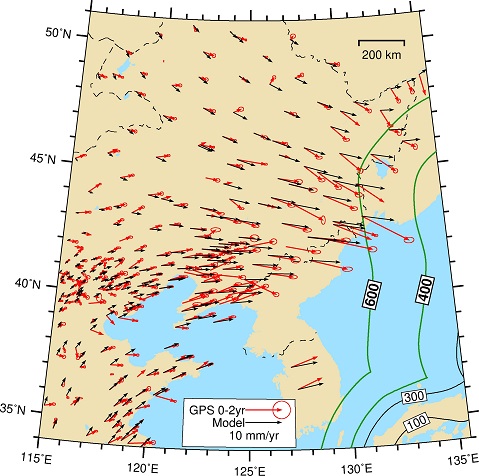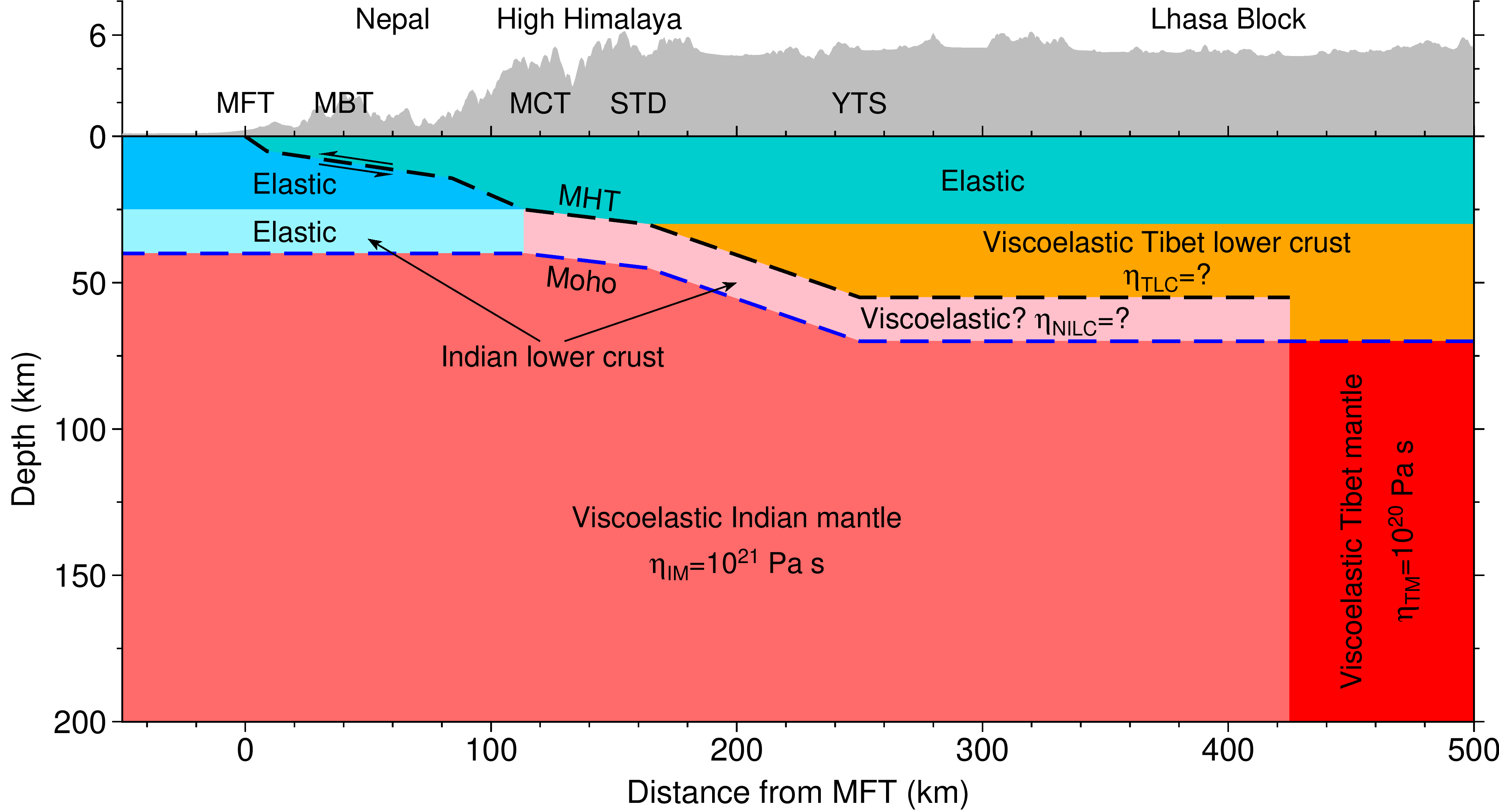


The collision of the Indian plate and the Eurasian plate caused the uplift of the Tibetan Plateau, which is characterized by widespread active faults and associated seismic activity. The surface velocities derived by Global Position system (GPS) indicate that the plateau is moving northeast and southeast relative to the stable Eurasian. An accurate description of the deformation field of this plate boundary zone is crucial for understanding the long-term crustal deformation and tectonic processes of the continent, and has important significance for lithospheric dynamics and seismic risk assessment. Based on the tomography, active fault distribution and previous studies, w
Read More
This project is funded by NNSFC (41774109). We try to look into the very-far-field postseismic deformation, the lateral variation in the rheological structure of the continental upper mantle, stress perturbations over the crustal active faults due to the 2011 Mw9.0 Tohoku earthquake. Research member: Yan Hu Collaborators: Bin Zhao, Min Wang
Read More
We used the first 5-year GPS observations to study the main postseismic processes following the 2015 Mw 7.8 Gorkha (Nepal) earthquake, including viscoelastic relaxation and afterslip, based on a three-dimensional (3D) finite element model (FEM). We considered a reliable geometry of the underthrusting Indian plate according to various geophysical images. We found that the models with a uniform elastic Indian lower crust fail to fit the vertical observations. A heterogeneous Indian lower crust with the transition from elastic (high-viscosity) to low-viscosity approximately under the Main Central Thrust (MCT) is required to reproduce the observed postseismic uplift between Ch
Read MoreCopyright © Geodynamics Research Center,USTC/DSEL. All Rights Reserved.